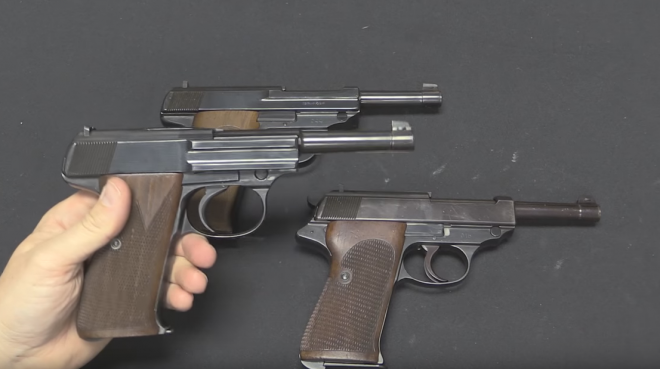The Walther semiautomatic handguns of the mid-20th Century, including both the PP and P38 families, would become some of the most influential weapons of the latter half of the century. The PP and its smaller stablemate the PPK was perhaps the premier pocket semiautomatic handgun for many decades, and its legacy carried over to the Russian PM Makarov pistol, many American pistols of all sizes, virtually countless European blowback semiautomatics, and it would inspire two major calibers, the 9×18 Makarov of the aforementioned Soviet pistol, and the 9×18 Ultra Police.
The locked-breech P38, too, was an incredibly influential design. While not the first double-action semautomatic handgun (the PP, as well as the much earlier Little Tom pocket pistol, preceded it), it was the first highly influential one. It operation and ergonomics would go on to be the pattern for almost all major post-war “Wondernines”, including the Beretta 92 series that became the M9 service pistol of the United States armed forces. The P38’s locking block even bears a striking resemblance to that of a later rifle, the Czechoslovakian vz. 58.
Forgotten Weapons’ Ian takes a look at the development of the P38, and how Walther went from the blowback PP in .32 ACP or .380 ACP to the excellent locked-breech P38 in a recent video embedded below. If you’re at all interested in Walthers, take a look, as you’ll get a rare glimpse at both the original MP prototypes as well as the mysterious sheet metal Walther:
 Your Privacy Choices
Your Privacy Choices
